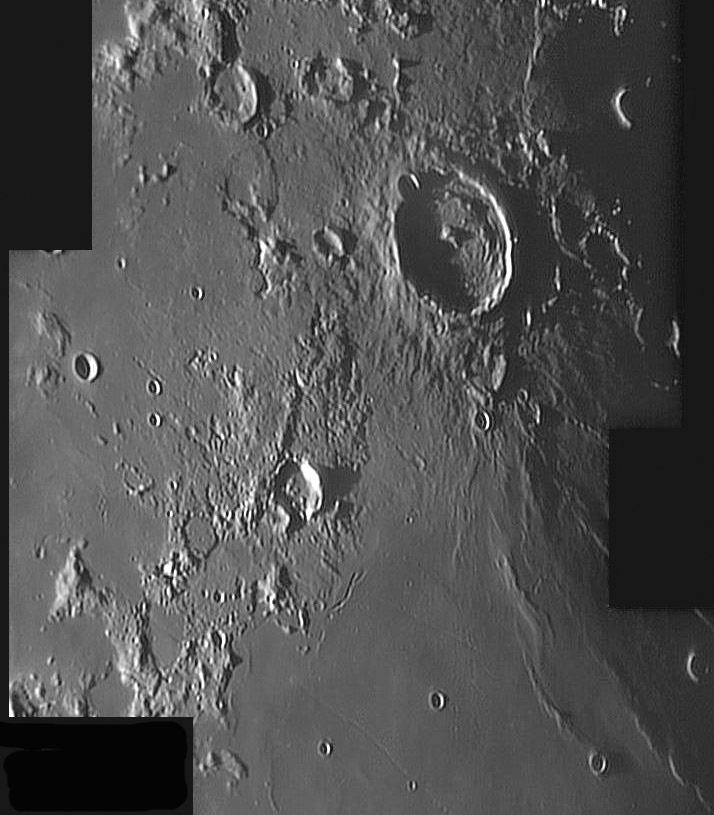image byOscar Canales Moreno, Pinsoro, Spain
Between the attractions of Cauchy and Messier is an often overlooked area of odd terrain and short rilles. The area surprisingly has a name - Secchi Mountains - although there are hardly hills, much less mountains there. The 24 km wide somewhat ill-formed crater Secchi is near the center of the roughness, which may simply be residual highlands between Tranquillitatis and Fecunditatis. The Secchi Rille runs northeast-southwest, but most of the shallow rilles here extend perpendicular to that direction. For example, the Messier Rille at bottom center and the fainter rille north of the small crater Secchi K. Northwest of the Secchi Mountains is another rille segment and/or crater chain heading in the same direction - roughly parallel to the Cauchy fault and rille. Taruntius and its ejecta dominate the eastern half of Oscar’s image. Peculiar tree-bark like lineations radial to Taruntius occur near the crater K. Low lighting beautifully shows the elevated circular ridge within Taruntius that identifies it as a floor-fractured crater. Three mare ridges in Fecunditatis appear to radiate from Taruntius, reminescent of the radiating rilles north of Lamont. What does it all mean?
Technical Details:
Nov 9, 2006. Skywatcher Newtonian 250mm + Mintron 12v6-EX; VirtualDub for deinterlace and video capture + Registax 4 + Photoshop.
Related Links:
Rükl plate 37
Yesterday's LPOD: Partial Phase of Pinkness
Tomorrow's LPOD: Polar Triptych
COMMENTS?
Register, Log in, and join in the comments.




